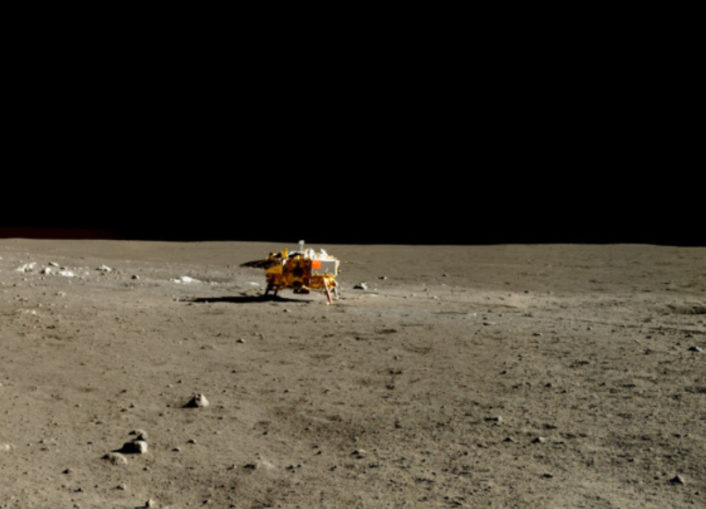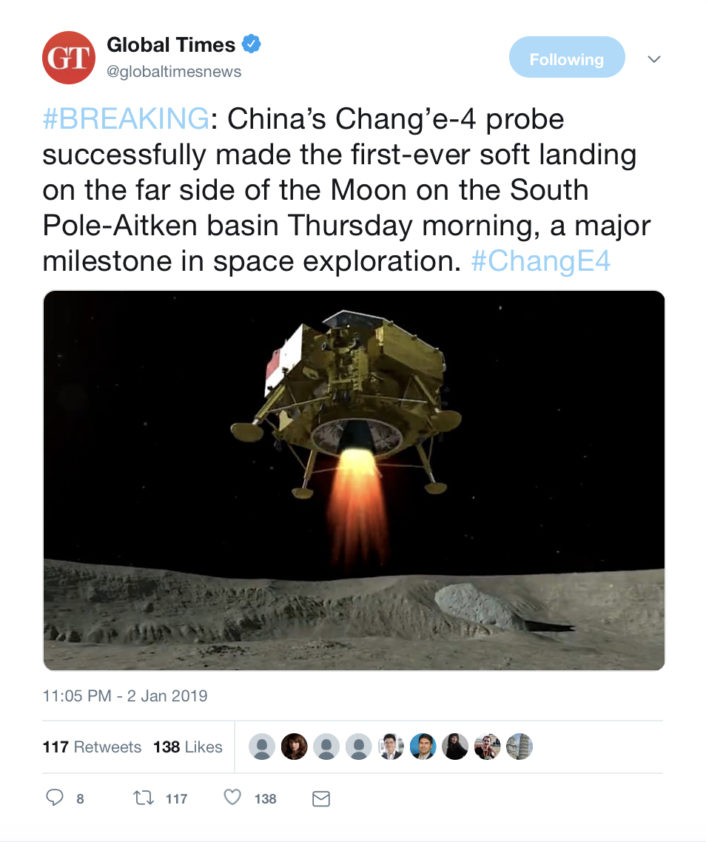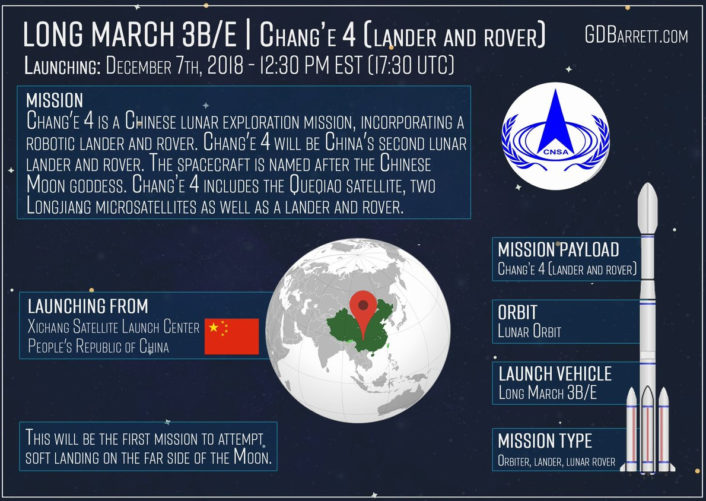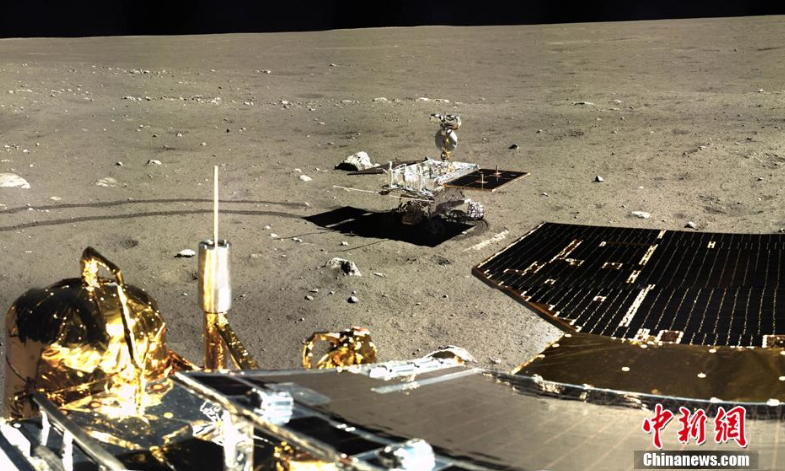Chinese Space Program Progresses Amid Widespread Defense Program Acceleration.
China became the first country in history to land an unmanned probe on the far side of the moon on Wednesday. The “Chang’e 4” spacecraft touched down on the far-side lunar surface at 10:26 AM Beijing time Wednesday Jan. 2, 2019, morning. In contrast to other unmanned lunar expeditions by the U.S., Russia, the European Space Agency and India, the Chinese Chang’e 4 was a controlled landing on the far side of the moon. Previous missions to the earth-facing side of the lunar surface by the ESA and India have been described as “controlled crashes”. Because the moon circles the earth every 27.3 days in a synchronous rotation the side of the moon where Chang’e 4 landed remains facing away from earth.
According to official Chinese government sponsored news media the China National Space Administration (CNSA) landed the robotic lunar lander in the unexplored South Pole-Aitken basin, the largest, deepest, crater on the lunar surface.

There was brief confusion about the status of the lunar landing when official government Tweets about a successful landing briefly disappeared from Twitter. Media outlet China Daily later confirmed the success of the mission when it announced on Twitter that, “China’s Chang’e 4 landed on the moon’s far side, inaugurating a new chapter in mankind’s lunar exploration history.” Additional confirmation of the mission’s success appeared on the official state broadcast network CCTV, who reported the lunar explorer landed successfully on the moon’s surface at 10:26 AM (02.26 GMT). The Communist controlled Global Times also said the probe had “successfully made the first-ever soft landing” on the far side of the moon.

Following the December 7, 2018 launch of the Chang’e 4 mission using a Long March-3B/G3Z booster/launch vehicle the Chinese spacecraft reached lunar orbit last weekend. It began a gradual descent to the lunar surface in successively lower orbits around the moon in preparation for the controlled landing Wednesday.
Adding to the complexity of the mission, radio waves transmitted from the “dark” or far side of the moon do not reach earth. China launched a radio-relay satellite to orbit the moon prior to Chang’e 4’s mission to enable the spacecraft to communicate with the earth.
Zhu Menghua, a professor at the Macau University of Science and Technology, told reporters, “This space mission shows that China has reached the advanced world-class level in deep space exploration,” Menghua, who has worked with China’s space administration, went on to boast, “We Chinese people have done something that the Americans have not dared try.”
Over the next few days the Chinese lunar lander will deploy an unmanned robotic surface rover similar to the U.S. Apollo program’s “moon buggy” that will explore and take samples of the lunar surface. The robotic lunar rover is equipped with cameras, ground-penetrating radar and spectrometers to analyze the geologic and chemical composition of the lunar surface and shallow sub-surface. The main lander is also equipped with an onboard experiment to determine if plant seeds will germinate under lunar gravitational conditions.
Some analysts observing the Chinese moon mission have suggested this landing location on the moon could become a refueling station for future spacecraft tasked with deep-space exploration.










